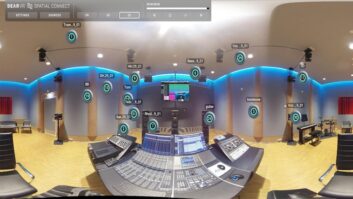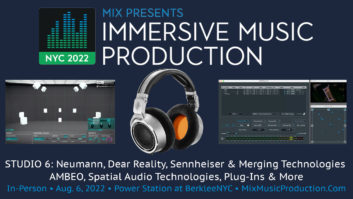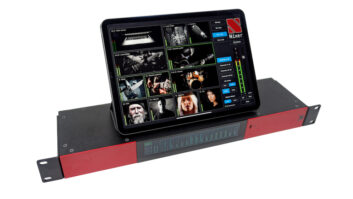So many speakers. And they’re everywhere. In your living room, kitchen and bedroom. In your car, on the plane, on the bus, on the train. They’re even on motorcycles as they split lanes during the morning commute on the Bay Bridge. They’re in the store, at the movies, coming out of kiosks, and coming out of digital signage. They’re at theme parks while you wait in line and then in the vehicle as you take the ride. They’re in the waiting room at the doctor’s office, at the restaurant, when you get off the moving walkway. They’re at school, in church, at the office and on the street, waiting for you to cross.
They’re hidden in the living room and they’re front and center in the media room. Sometimes they’re in the ceiling and sometimes they’re on the floor behind the couch pointing up. They’re in sound bars with a low, sleek profile, and they’re disguised as rocks to feed the pagoda in the backyard. They’re mounted and they’re freestanding. They are wired and wireless, USB and Bluetooth. They can be good, bad and ugly.
For professionals, they come with 3, 4, 6, 8, 10, 12 and 18-inch woofers. Three-way and two-way, bi-amped and tri-amped, powered and with separate electronics. Active and passive. For desktop, near-field, mid-field or mains. In a soffit or out in the room. Full-range surrounds, or not full-range. Crossover points. With a subwoofer or without. DSP. EQ. Room tuning built-in. Distributed power. High and low shelving. Steerable coverage or wide dispersion.
And we haven’t even talked about the surge in headphones and earbuds.
There is so much audio out there in the world, and there are so many options in how to play it back. This makes complete sense, as there is nothing in the audio chain that is more subject to subjectivity, to a personal preference in color and taste and frequency response. There’s a reason that Yamaha NS-10s remain a pseudo-standard some 30-plus years after their introduction.
But with all the options and all the flavors, all speakers have one goal: to reproduce some semblance of reality. For decades, that reality came out of one speaker and hit two ears. Then there was a second speaker added, and stereo became dominant. Then came 5.1, 7.1, 11.2 and 22.1, at home and out in the world. And now there’s a push for Dolby, Auro and DTS immersive playback, with speakers in the ceiling and many more on the walls, creating a spherical, all-encompassing environment, all designed to give a greater sense of how we hear in the real world.
And now here comes virtual reality, bringing a host of new challenges and responses.
Audio for VR is headphone-based at this point, so there are key issues of spatialization and head position to deal with. A transducer that supports the action in a virtual world must let the listener know where he or she is in relation to any 3D space, whether out in an open field fighting bad guys or in a quiet room having a conversation, with dialog bouncing off the walls and couches. If the VR player turns his back, the audio has to follow appropriately; if he runs into a new room and the mob is chasing him, that must follow, too. Audio pros would be wise to re-familiarize themselves with Head Related Transfer Function.
It’s quite literally a whole new world in playback, one that is determined by the user and not by the location of a sweet spot for optimum listening. Plug-ins will be forthcoming, new tools will be developed for positioning and spatialization, and best practices will be circulated among creators.
For now, the virtual world is rising out of the gaming world. In the not-too-distant future, we will all be hearing played back audio in an all-new way. It’s time to get ready.
Tom Kenny, Editor, Mix







